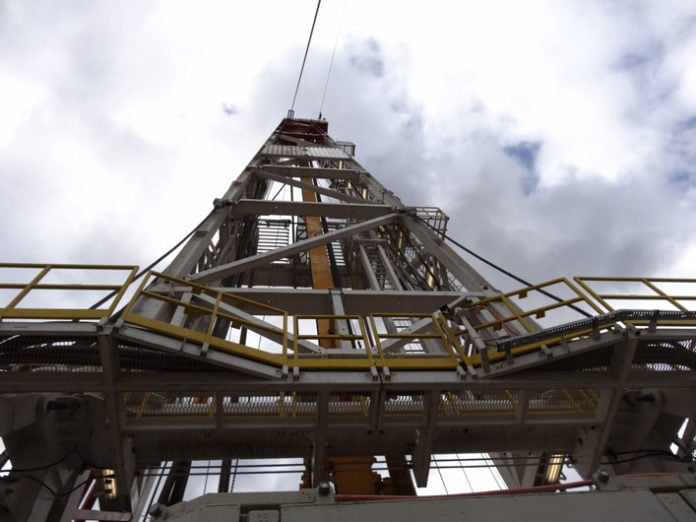When drilling a long lateral well, it is very important to know the position of the drilling bit.
It is equally important to know the formation geology to ensure that the well is being drilled in the right zone.
Before tools like MWD or LWD were invented wireline was used instead.
Wireline is just a flexible metal cable used to run various downhole tools in the well.
To run a wireline the drill pipe needs to be pulled to the surface which means measurements cannot be taken in real-time while drilling.
In addition, wireline is not very effective in long lateral wells.
That’s why nowadays tools like MWD and LWD are commonly used instead.
Related: Most Common Types of Wireline Logging Operations
What is MWD?
Measurement while drilling (MWD) is used in the oil and gas industry to get real-time information about wellbore trajectory as well as other downhole data.
This data is sent via pressure pulses to the surface where it is received by surface transducers.
Later the data gets decoded and can be used to make real-time decisions during a drilling operation.
Precise control of the wellbore trajectory is very important when drilling horizontal wells because the well has to be drilled in the right zone and there is not much room for error.
Two measurements that are commonly used to figure out a well trajectory are azimuth and inclination.
In addition, drilling bit information can be transferred to the surface as well.
This helps to gauge the condition of the bit and improve drilling efficiency.
Related: What Do MWD Operators Do in the Oil and Gas Industry?
Main MWD Tool Components
MWD tool is usually placed above the drilling bottom hole assembly.
The typical components of the MWD tool:
Power source
There are two main types of power sources that are used on MWD tools: battery and turbine.
Usually, lithium batteries that can operate at high temperatures are used.
The turbine generates electricity when mud flows through it.
It is great for longer operations but the downside is that fluid circulation is required for it to generate electricity.
Sensors – common sensors on the MWD tool are an accelerometer, magnetometer, temperature, strain gauge, pressure, vibration, and gamma-ray sensors.
Electronic controller
Transmitter – transmits data to the surface by creating mud pulses in the drill string.
There are three ways in which MWD tools transmit the data to the surface:
Positive pulse – created by increasing the pressure in the drill pipe by restricting the fluid flow in the tool.
Negative pulse – created by decreasing the pressure in the drill pipe by releasing fluid from the drill pipe into the annulus.
Continuous-wave – sinusoidal type pressure wave generated by closing and opening the valve on the tool.
What is LWD?
Logging while drilling (LWD) is used to get formation data.
Often LWD data is stored in the built-in memory on the tool and retrieved later when the tool gets to the surface.
LWD is commonly used for resistivity, gamma-ray, neutron, and density logging.
The Difference Between Wireline Logging and LWD?
The main difference is that LWD is run on a drill pipe while wireline logging tools require a wireline.
This means that wireline logging requires a separate run after the drill pipe is pulled to the surface.
The main advantage of wireline logging is that it allows for much better real-time data transfer to the surface, better depth control, and allows power to be supplied from the surface to the tools.
This prevents any potential power-related issues that can be encountered with LWD tools that run on an internal battery or have a turbine power generator.
The main advantage of LWD is that no extra run is required to get the logging data.
In addition, LWD tools can easily get into long horizontal wells because they run on a drill pipe.
Wireline on the other hand is a flexible cable and it might encounter challenges on longer wells.
